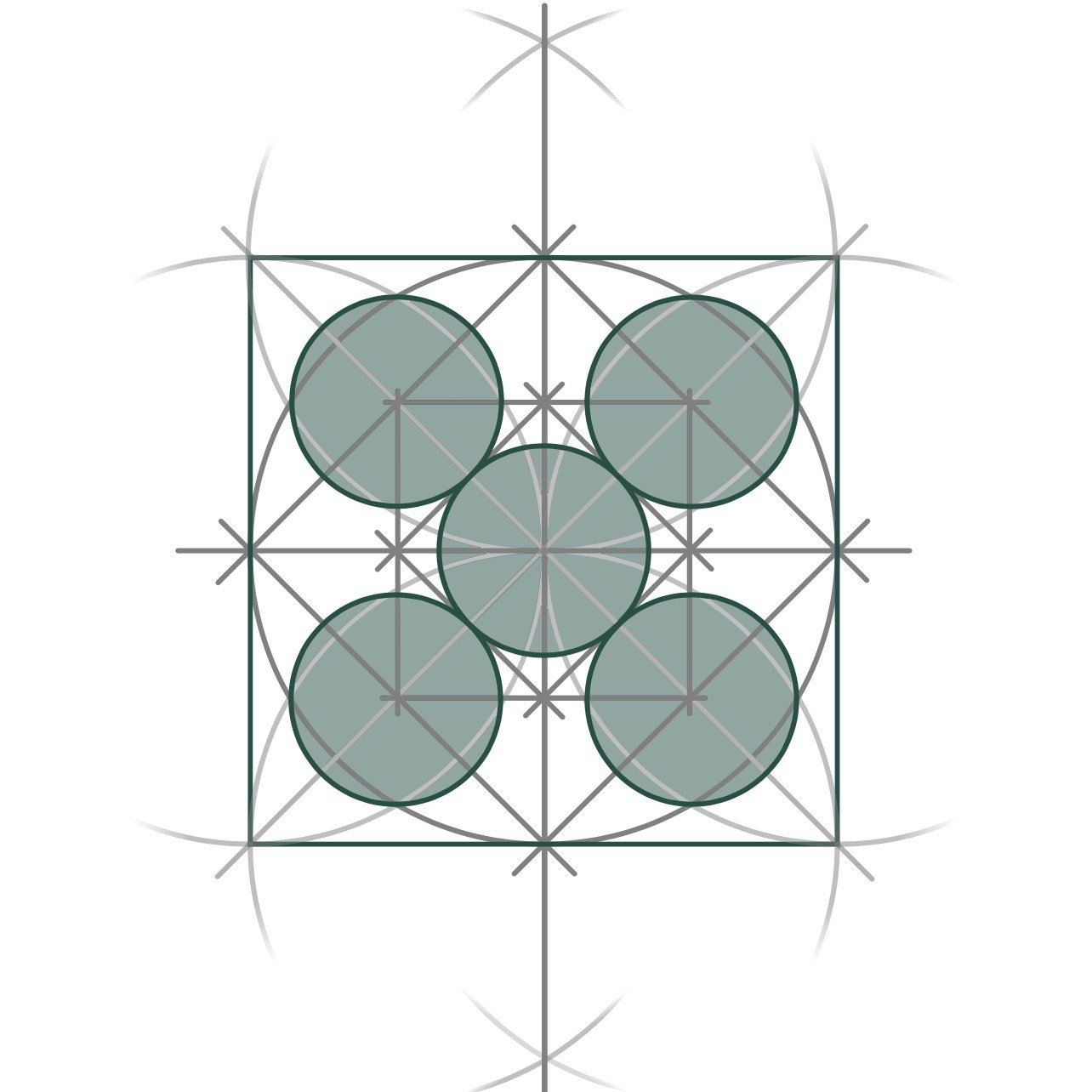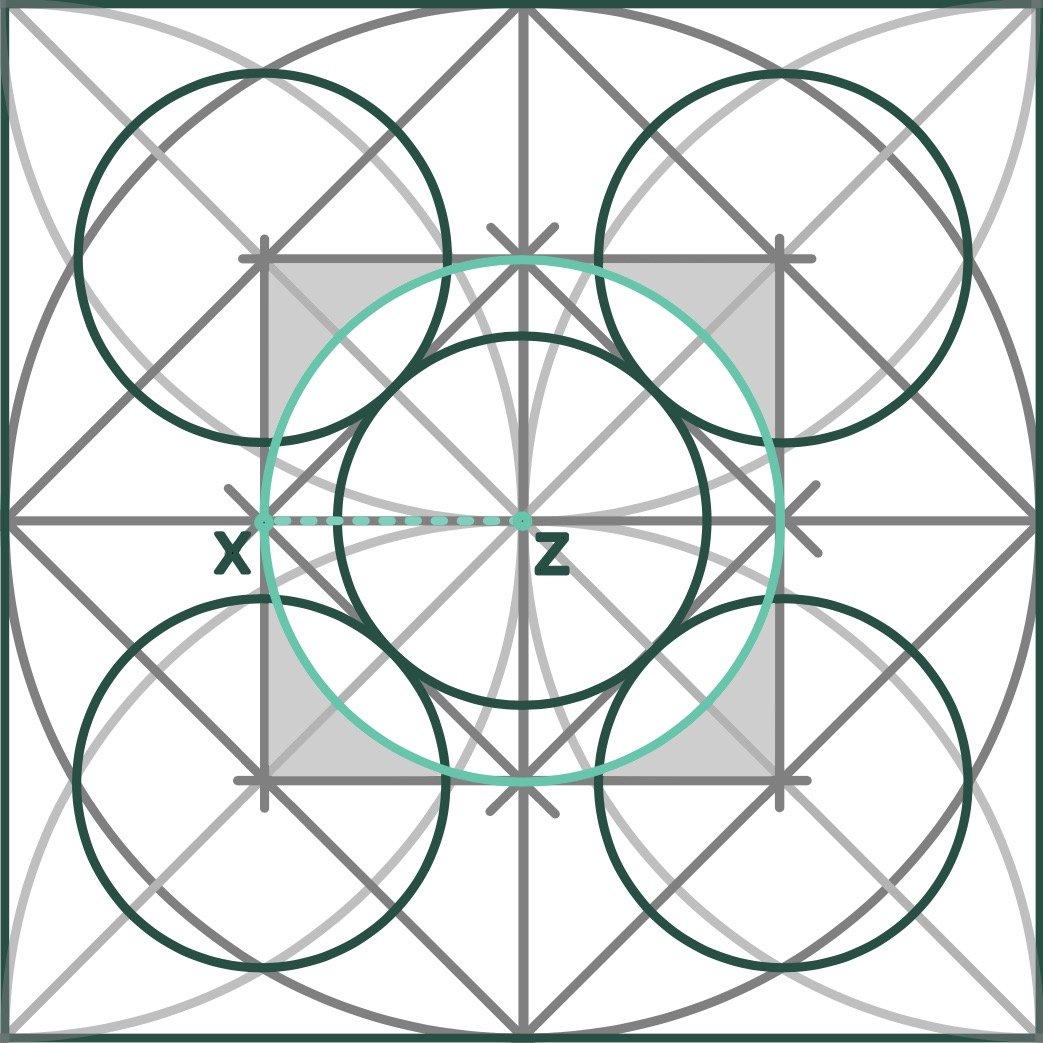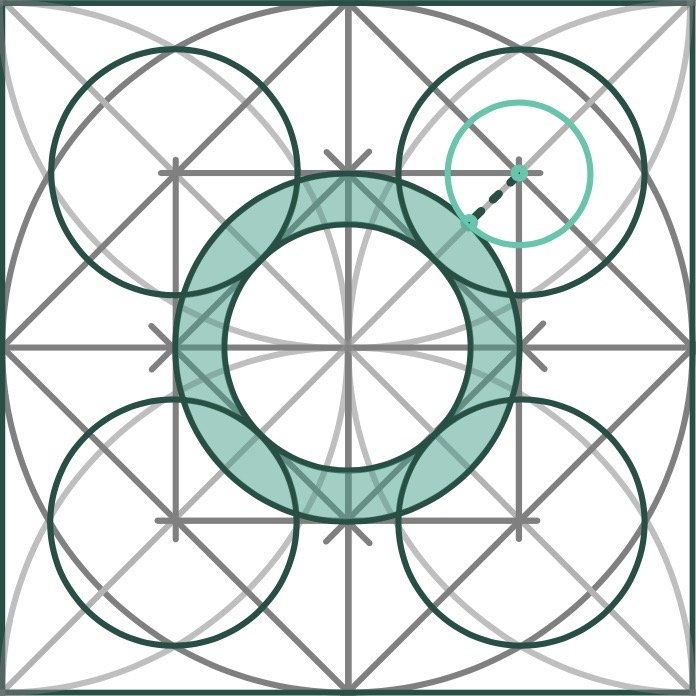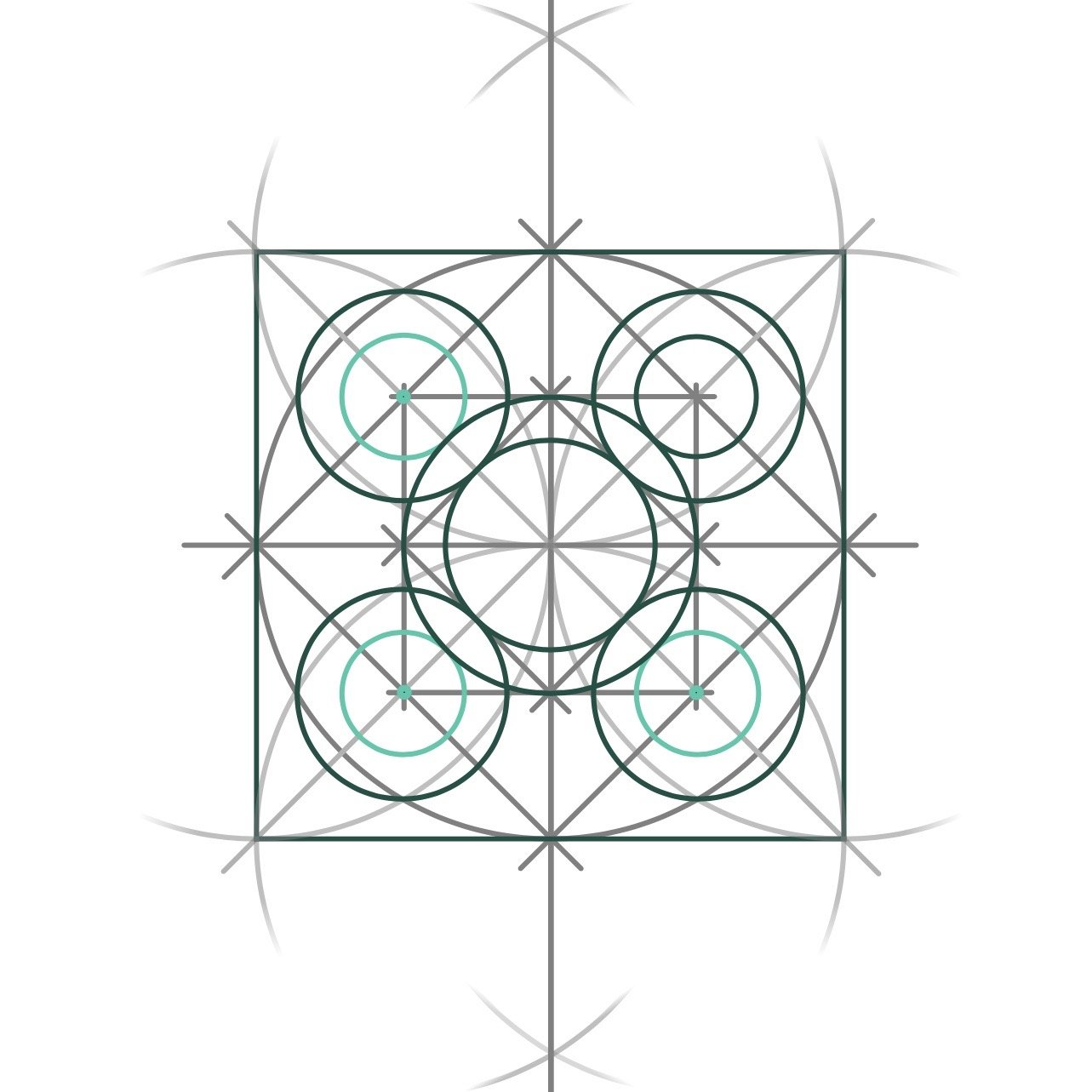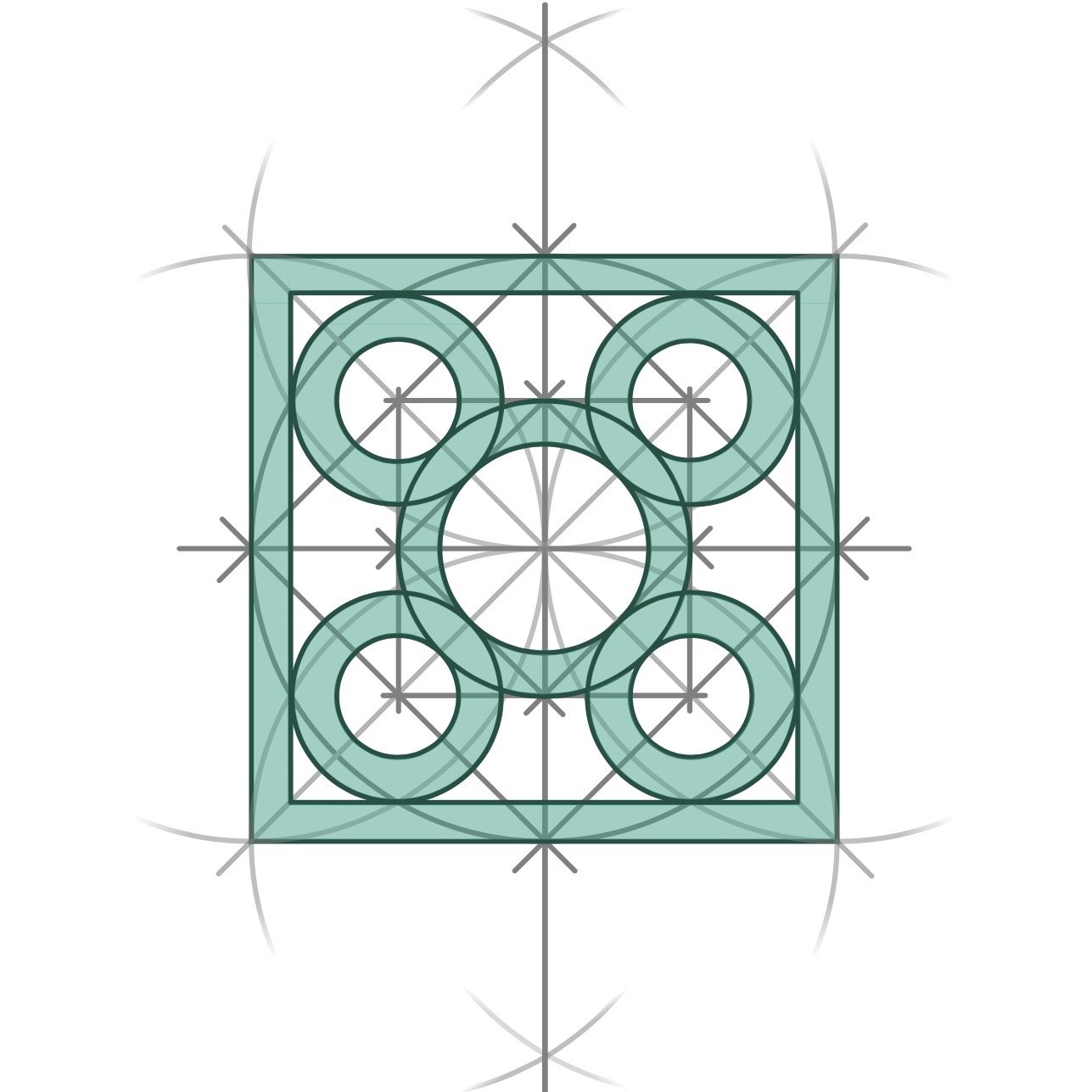The origin and historical background of this prayer is unknown to me. It was included in a little booklet of Lenten prayers given out some years ago at the Brompton Oratory, London. I was struck by its poignant beauty and depth. The reason I have it here is because of its devotion to the deep woundès two and three of Jesus Christ. The Five Wounds of Christ is what the Cosmatesque quincunx recounts for me. I do have little to support this reading as a historically valid possibility: Saint Clare’s Devotional Prayers of the Sacred Wounds came from around the same time as the Cosmatesque pavements. The Bridgettine sisters, followers of Saint Bridget of Sweden who lived and died in Rome not much later, have a distinctive headwear which includes five red marks in the quincunx formation, indicative of the Five Wounds of our Lord Jesus. I look at the Cosmatesque ornaments not as an expired, but a dormant ingredient of the Catholic artistic tradition. Infusing these ornaments with contemporary symbolisms, as long as in accordance with the Catholic faith, could possibly help in bringing them back into use, even if is not how they were understood at the time of their making. However, an in-depth, evidence supported, theologically sound analysis of their historical symbolisms, from those with appropriate knowledge, would be of much benefit to their revival.
Quincunx (plural quincunxes or quincunces) is an arrangement of five units with four at the corners of an imaginary square and the fifth at its centre, like the pips on the five-side of a die. The quincunx was a coin issued by the Roman Republic at around 200 BC, whose value was 5/12 (quinque and uncia) of an as, the Roman standard bronze coin. However, the coin’s indicative dots or pallets were not necessarily in the quincunx arrangement. The first known citation for it with a geometric meaning, as a pattern used for planting trees, dates from 1606. To my knowledge the word in the context of Cosmatesque ornaments is of modern use and I often wish I could know by what name this arrangement went by among the Cosmati craftsmen. The quincunx is the quintessential arrangement of Cosmatesque ornaments.
Paloma Pajares-Ayuela in her book Cosmatesque Ornament diligently gathered many diverse threads to explain the possible symbolisms of the quincunx at the time of the Cosmati. I include a snippet and recommend this thoroughly informing book:
“The tetramorph […] is composed of four hybrid figures, half man, half beast: Saint Matthew, the man-angel, Saint Mark, the lion, Saint Luke, the bull, and Saint John, the eagle. Each of the figures occupied one of the angles of a square. […] The tetramorph formed, together with a central figure, a quincuncial composition that symbolised heaven, sacredness, the place of the chosen. The central figure was, almost always, a Christ figure […]. The Cosmatesque quincunx is the geometric translation of the figurative symbol composed of the tetramorph with Christ in the center.“
This 11th c. ivory plaque, made in Southern Italy, shows Christ, the Agnus Dei on the Cross, between the emblems of the Four Evangelists who are taking the Word of God to the four corners of the world. It is an arrangement which the Cosmatesqe quincunx is a sibling to, a relationship which Pajares-Ayuela describes as “[…]a geometric abstraction of a figurative symbol, the symbol of a symbol.”
The Cosmatesque quincunx is not a uniform geometric affair. The central element is usually a circle, but can be a different geometric figure. The size relationship between the inner element and the four which surround it can change from one pavement to another. A quincunx can form the central part of another quincunx, as is the case with the Westminster Abbey pavement. The figures which frame a quincunx, and how these framing figures join with their neighbouring constructions via the light marble bands, also have a multitude of variations.
The diagrams below illustrate some of the basic arrangements of the Cosmatesque quincunx:
Quincunx
Decussate Quincunx
Quincunx-in-square
Quincunx-in-square with a poised/dynamic-square centre
There is such an abundance amid the Cosmatesque that it can provide a geometer with an almost endless source of analysis material and inspiration. However, to start with, it is important to learn to draw the quincunx in its most skeletal form. I have been taught the following basic construction during my MA at the King’s Foundation - School of Traditional Arts, London, and am thankful for its clarity upon which I was able to build more elaborate and particular arrangements.
Simple Quincunx
Materials:
compass
30cm ruler
H or 2H pencil
A4 printer paper
card or cutting mat
eraser
Notes:
place the A4 paper in portrait orientation
the Simple Quincunx is drawn upon the Quadrature construction
first follow all the steps for Quadrature and then progress with steps below on the same drawing
please use the contact button should you have any queries or would like to share your work
Some of the expressions I use to describe the Simple Quincunx construction.
1) On the Quadrature construction identify the five points marked with large coloured dots: the centre point Z and the four corners of the inner static square. These points will be the centres of the five quincunx pips.
2) Find the mid-point between centre point Z, and one of the marked corners. It will fall on the intersection where the inner dynamic square meets the diagonal axis of the construction. Mark this point as Q. Place the compass needle in point Z and stretch the compass to point Q. This radius ZQ will be the radius with which the five pips of the quincunx will be drawn.
3) With compass needle in centre point Z and radius ZQ, inscribe a circle inside the inner dynamic square.
4) With the same radius ZQ draw a circle from each of the previously identified corner points. The five circles should display the quincunx arrangement.
5) The five pips of the quincunx.
6) Find one of the corners of the inner dynamic square and mark it as point X. Place compass needle in centre point Z and find the new radius ZX.
7) With compass needle in centre point Z, and with radius ZX inscribe a circle within the inner static square. This circle will be the outer rim of the inner ring of the quincunx.
8) The inner ring of the quincunx is now visible in the centre, it will be larger than the four corner rings.
9) Place the compass needle in the centre point of a corner pip. Stretch the compass inwards to reach the outer rim of the central ring. Draw a circle, it gives the inner rim to the corner pip turning it into a ring.
10) Draw the inner rims inside each one of the three remaining corner pips.
11) The larger inner ring, as well as the four corner rings of the quincunx, are now complete.
12) To contain this simple quincunx inside a square, draw tangenting horizontal and vertical lines along the outer rims of the rings. These lines will be parallel to the main square of the construction.
13) The above drawing has the same quincunx-in-square arrangement.
14) The quincunx can be woven either way, clockwise or anti-clockwise and I have seen examples of both. To weave a quincunx first run your finger along the central ring and loop around the corner ring.
15) The finger will cross four lines as it loops each one of the corner rings. With an eraser either remove the first two lines which you encounter (lines marked 1 and 2) or the later two (lines marked 3 and 4).
16) Here lines 1 and 2 have been removed from the path giving the quincunx a clockwise weave.
17) A Quincunx woven in clockwise direction.











